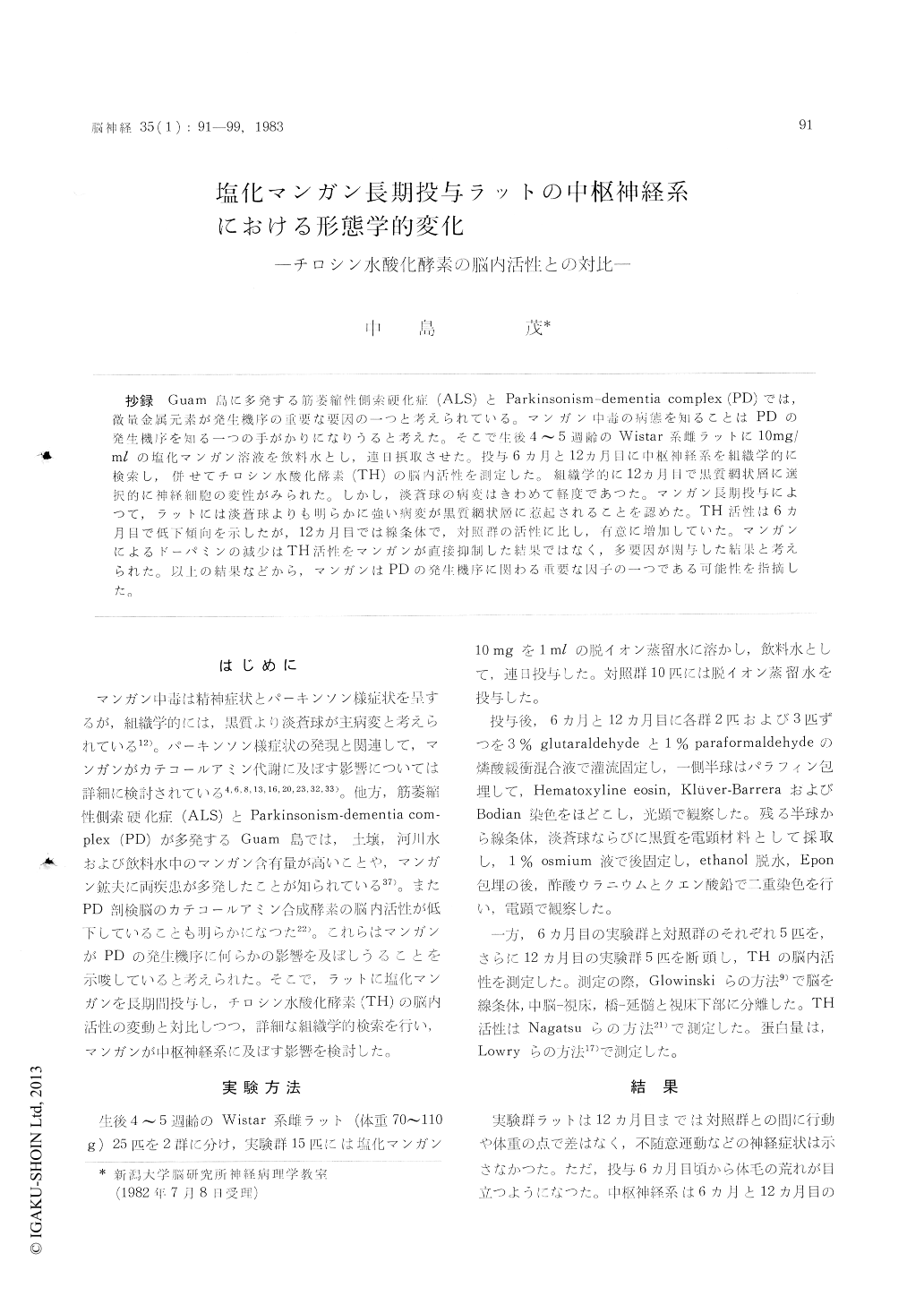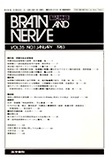Japanese
English
- 有料閲覧
- Abstract 文献概要
- 1ページ目 Look Inside
抄録 Guam 島に多発する筋萎縮性側索硬化症(ALS)とParkinsonism-dementia complex (PD)では,微量金属元素が発生機序の重要な要因の一つと労えられている.マンガン中毒の病態を知ることはPDの発生機序を知る一つの手がかりになりうると考えた。そこで生後4〜5週齢のWistar系雌ラットに10m/mlの塩化マンガン溶液を飲料水とし,連日摂取させた投与6ヵ月と12ヵ月目に中枢神経系を組織学的に検索し,併せてチロシン水酸化酵素(TH)の脳内活性を測定した。組織学的に12ヵ月目で黒質網状層に選択的に神経細胞の変性がみられた。しかし,淡蒼球の病変はきわめて軽度であつた。マンガン長期投与によつて,ラットには淡蒼球よりも明らかに強い病変が黒質網状層に惹起されることを認めた。TH活性は6ヵ月目で低下傾向を示したが,12ヵ月目では線条体で,対照群の活性に比し,有意に増加していた。マンガンによるドーパミンの減少はTH活性をマンガンが直接抑制した系結果ではなく,多要因が関与した結果と考えられた。以上の結果などから,マンガンはPDの発生機序に関わる重要な因子の一つである可能性を指摘した。
Chronic manganese poisoning is characterized by mental and extrapyramidal disturbances. Parkin-sonism-dementia complex (PD) on Guam is also manifested by progressive extrapyramidal synd-rome and dementia. In PD, the reduced activities of catecholamine synthesizing enzymes in thebrain has been demonstrated. On the other hand, the soil and water in Guam are rich in mangan-ese, and one of the possible etiologic factors is trace element dysmetabolism in PD.
The purpose of this paper is to clarify the effect of chronic manganese loading on the central nervous system.
Manganese chloride (10mg/ml of demineralized and distilled water) was administrated orally to Wistar female rats weighing 80-110 g. Six and 12 months after the administration, manganese load-ed and control rats were sacrified by perfusion for histological studies and by decapitation for the assay of tyrosine hydroxylase (TH) activity. The striatum, globus pallidus and substantia nigra were examined with electron microscopy. The brain for TH assay was dissected into four parts as the striatum, midbrain-thalamus, pons-medulla oblongata, and hypothalamus.
Ultrastructural changes were overwhelmingly detected in the zona reticulata of the substantia nigra at 12 months. These changes were mainly composed of alterations of the postsynapse and neuronal soma-shrunken and electron dense dendrites accumulated degenerating materials and so-called simple atrophy of the neuron. Altera-tions in the presynapse were extremely milder than those in the postsynapse and neuron.
At both 6 and 12 months, no significant changes in the striatum and globus pallidus were detected except for irregular windings of the plasma mem-brane in the axon terminal of the globus pal-lidus at 12 months.
TH activities at 6 months tended to decrease in four dissected regions but these reductions were not statistically significant. However, TH activi-ties at 12 months were significantly increased in the striatum (P<0.05 against the value of 6 months controls).
Thus the reduction of brain dopamine contents with manganese poisoning might not result from the decreased activity of TH.
Based on these findings, manganese exposure might be possible even in rat to produce similar neuropathological changes to manganese poisoning in man, and manganese was assumed to be one of the possible etiologic factors causing the patho-logical processes in extrapyramidal system of PD.

Copyright © 1983, Igaku-Shoin Ltd. All rights reserved.


